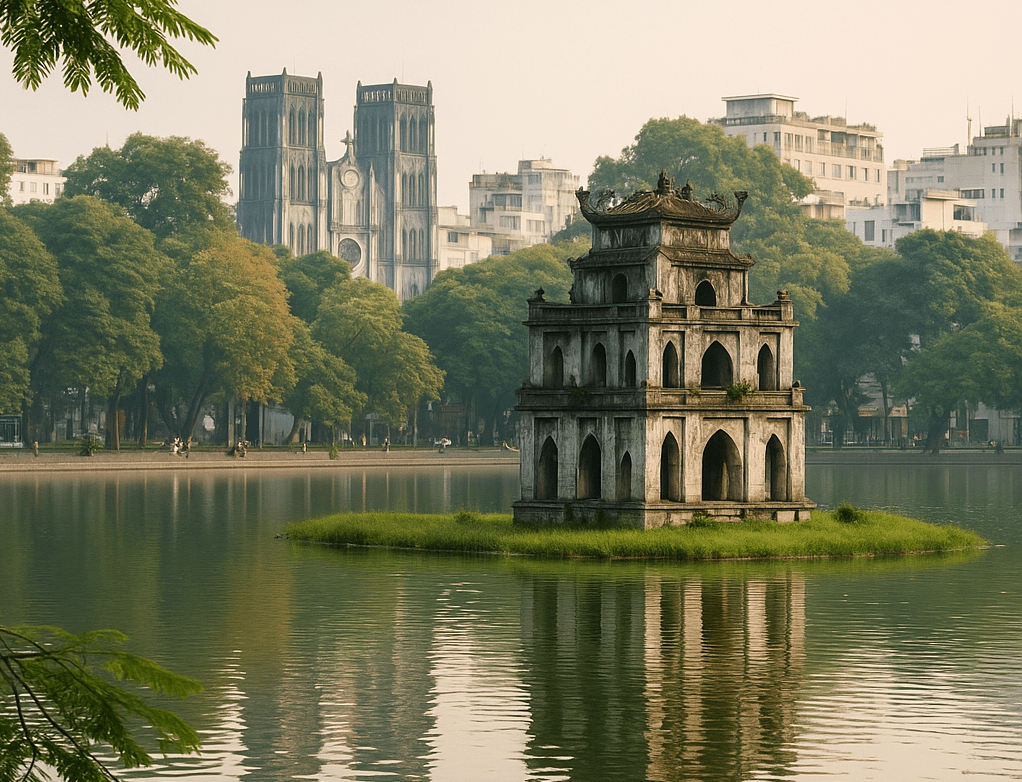
Exploring the enchanting landscapes of Vietnam, it becomes undeniable that the country is home to numerous charming villages that offer more than just picturesque views and rich history. From vibrant markets pulsing with life to tranquil rice terraces and serene waterways, these ecotourism spots invite travelers to immerse themselves in traditional culture and sustainable living. This guide will take you on a journey to discover four remarkable villages in Vietnam that are not only steeped in beauty but also committed to the principles of ecotourism, transforming nature into a magical experience.

1. Giang Ta Chai: The Hidden Gem in the Mountains
Nestled in the northern mountains of Vietnam, Giang Ta Chai is a small village that showcases the breathtaking beauty of the Sapa region. With rolling hills and lush forests, this village promises travelers a heartwarming experience with its stunning terraced rice fields and friendly locals.
A Gateway to Ethnic Diversity
When visiting Giang Ta Chai, you’ll encounter the fascinating culture of the Red Dao and H’mong ethnic groups. Be sure to take time to visit their traditional homes, which are commonly built with wooden materials and adorned with vibrant textiles. Interacting with the locals provides a glimpse into their daily lives, and many are more than happy to share tales of their heritage and customs. To deepen your understanding, consider joining a guided tour that includes a cultural workshop on local crafts.
Tips for Visiting
- Best Time to Visit: The ideal months are from March to May and September to November, when the weather is pleasant and the landscapes are at their most picturesque.
- What to Bring: Comfortable walking shoes are essential for exploring the village trails. Don’t forget a camera to capture the stunning scenery!
- Getting There: Travel to Giang Ta Chai is mainly by motorcycle or organized tours from Sapa town, approximately 10 kilometers away.

2. Ta Van: A Slice of Rural Paradise
Ta Van village is a quintessential part of the Sapa experience, sitting along the Muong Hoa river and surrounded by spectacular mountains and rice paddies. This village stands out not just for its picturesque landscapes but also for its commitment to ecotourism.
Immersive Nature Experiences
In Ta Van, you can participate in various eco-friendly activities, including trekking through lush fields and visiting local farms. Several homestays in the area offer organic meals, showcasing fresh produce sourced from nearby gardens. For those looking for a real adventure, guided treks will take you to hidden waterfalls and breathtaking viewpoints, where you can immerse yourself in the serene beauty of nature.
Practical Insights for Travelers
- Accommodations: Consider staying at a homestay to fully embrace the local culture. Experiences such as cooking classes and cultural exchanges are often included.
- What to Do: Don’t miss the opportunity to bathe in natural hot springs nearby—it’s a delightful treat after a day of trekking.
- Cultural Tips: Learning a few basic Vietnamese phrases can enhance your interaction with locals and demonstrate your interest in their heritage.

3. H’mong Village: A Cultural Mosaic
Located in the northern highlands, H’mong village is an extraordinary destination that thrives on its vibrant traditions and enchanting landscapes. This village is not just for its stunning sceneries but also as a model for sustainable living.
The Art of Handicrafts
One of the highlights of H’mong village is the exquisite handicrafts produced by local artisans. From handwoven textiles to intricate silver jewelry, visitors can see these skilled craftsmen and women at work. Participating in workshops allows you to learn traditional crafts firsthand, which can be a priceless souvenir from your trip.
Travel Recommendations
- Best Visiting Season: Spring and autumn are perfect for exploring H’mong village, thanks to blooming flowers and mild weather.
- Local Etiquette: Always ask for permission before taking photographs of people’s work or homes. Respect for local customs enhances your travel experience.
- Transportation: Accessible via bus or private car from Sapa, this village allows for easy exploration while being surrounded by nature.

4. My Tho: The Mekong Delta Delight
Transitioning to the south, My Tho offers a unique glimpse into the life along the Mekong Delta. This bustling village serves as a gateway to the rich ecosystems of the delta, where both nature and culture thrive harmoniously.
Canals and Coconut Groves
The highlight of My Tho is undoubtedly its canals, winding through lush coconut groves that are ideal for boat tours. Exploring the waterways by kayak or traditional wooden boats offers an unforgettable experience, revealing the vibrant aquatic life of the delta. During your journey, don’t miss out on sampling local delicacies, such as fresh fruits and traditional Vietnamese sweets.
Essential Visitor Information
- Best Time to Explore: The dry season from December to April is perfect for visiting, as the weather is pleasant.
- Cultural Experiences: Engage with local workshops where you can learn how to make traditional candies using coconut and nuts.
- Getting Around: Once in My Tho, opt for a bicycle or motorbike to explore the surrounding areas at your own pace.
Conclusion
Vietnam’s charming villages each offer a unique experience, merging the beauty of nature with rich cultural traditions in a sustainable manner. From the breathtaking mountain views of Giang Ta Chai to the lively canals of My Tho, these destinations inspire travelers to embrace eco-friendly tourism while indulging in the local culture. Venture into these magical settings to create unforgettable memories and truly experience the heart and soul of Vietnam.


